Garden ivy: features, planting and care

Evergreen ivy (Hedera) is a well-known plant. When meeting with him, the imagination involuntarily conjures up associations with the views of English mansions entwined with climbing vines. It easily twists and attaches to any walls, fences and supports, thanks to which it is widely used in creating landscape compositions.


Description
Garden ivy is a liana-like evergreen perennial plant of the Araliev family. Its curly stems-lianas with the air roots-suckers available on them are capable of braiding surfaces of various configurations, they can grow up to 30 m in length. There are many varieties of ivy that differ from each other in the decorative properties of the leaves.
Leaves of various shapes (heart-shaped, three-toed, five-toed) are painted mainly in green shades of color.
Some decorative varieties are characterized by variegated foliage, with stripes, strokes, multi-colored blotches, edging around the edges.

Ivy bloom begins no earlier than 10-12 years of age. Ivy bloom in autumn, plain yellowish "umbrellas" that are not decorative value, the smell of inflorescences is peculiar, not pleasant. The fruits are black berries with a bluish tinge, which give the plants an additional decorative effect. They are poisonous to humans, but birds, especially pigeons and blackbirds, enjoy them with pleasure without the slightest harm to health.
The medicinal properties of ivy have long been used in folk medicine (decoctions, tinctures, syrups). In pharmacology, ivy-based preparations are created, which are successfully used in medicine in the treatment of gout, rheumatism, hypertension, thyroid gland, respiratory tract diseases, blood vessels and many other diseases.

Types and varieties
Ivy is a thermophilic plant, grows well in regions with a warm climate, but there are winter-hardy varieties that are successfully grown in garden plots and dachas in the Moscow region and throughout the territory of central Russia. The main species groups of ivy: common, Colchis and Crimean.
The most widespread in our latitudes is the common frost-resistant ivy (Hedera helix). In the first years after planting, it grows slowly but surely. It is used in vertical gardening and as a ground cover crop. Unpretentious, prefers a windless shaded place, has many varieties of shapes and varieties.

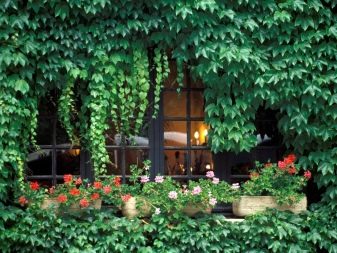
How to propagate?
The best way to propagate ivy is by cuttings. In spring or early summer, healthy semi-lignified shoots are chosen and cuttings of 12-20 cm each with rudiments of aerial roots are cut from the apical parts. The lower part of the cutting is cleaned from leaves to the level of immersion in the ground and moistened with Kornevin solution to stimulate the formation of the root system.
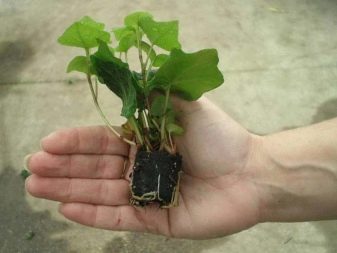
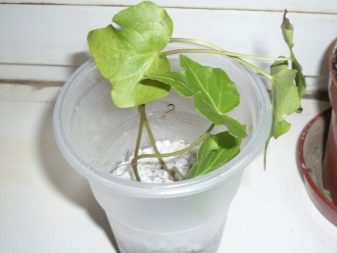
You can root cuttings in a container with a nutrient substrate, in water or directly in the soil. The safest way to do this is in a loose soil substrate. The cuttings are placed in the ground by one third, watered and left for about a month and a half, constantly keeping the soil moist. After rooting, new seedlings should be transplanted into the garden for further cultivation.
Common ivy can be propagated by layering. To do this, you need to bend the lower stem to the soil, fix the contact point with metal pins or wooden slingshots, sprinkle it with earth and ensure regular watering.
The air roots will quickly grow and turn into soil ones. The next year, the rooted plant will be ready to be planted in its permanent location. It is separated from the main bush and transplanted.
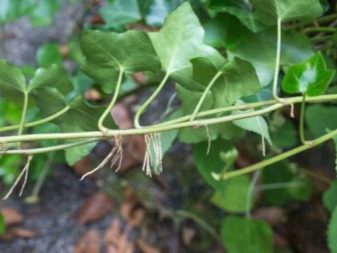
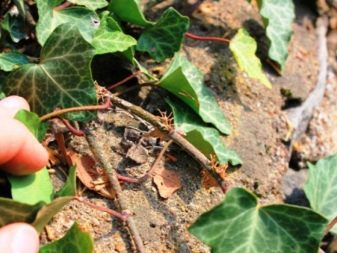
Landing
The best time to plant vines is early spring. For planting evergreen ivy, choose a suitable place. Ideal would be an elevated area where there is no stagnant groundwater, no drafts and strong winds, shaded from direct sunlight. The best soil option is loose, fertile, with a neutral or slightly alkaline reaction, with good aeration and moisture permeability.
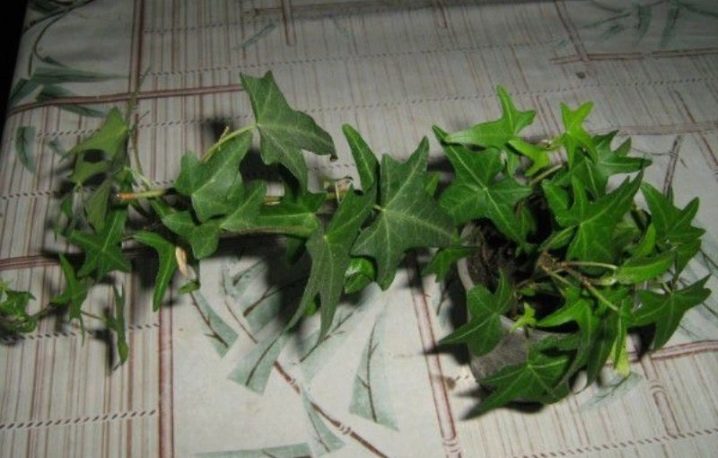
It is necessary to prepare the planting hole in such a way that the roots of the seedling fit freely into it during planting. A drainage layer is laid in the pit (fine gravel, pebbles are suitable) and a little soil mixture is poured. You can take a ready-made substrate purchased from a specialized store.
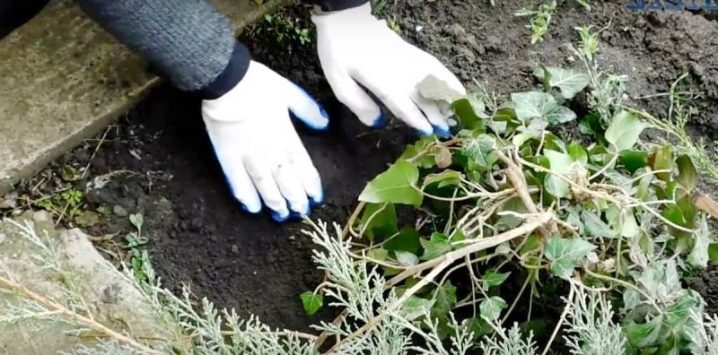
The prepared seedling is placed in a hole, the soil is laid and the near-stem zone is slightly compacted, then the plant is abundantly watered. When planting several seedlings, they are planted at a distance of half a meter from each other.
In order for a young vine to take root well, you need to properly care for the plant from the first days of planting.
Care
Ivy care procedures are not particularly difficult and do not contain any unthinkable manipulations. It is enough to carry out simple elements in a timely manner: watering, feeding, mulching, pruning, loosening the soil, preparing for winter, in accordance with the recommendations of florists.

Watering
Proper watering is essential for healthy, ornamental garden ivy to grow. Do not water the plants too often or dry out the soil. The frequency of watering directly depends on weather conditions - during rains (depending on their intensity), watering is reduced, and in dry weather, it is increased. Determining the readiness of a plant for watering is quite simple - you need to check the soil under the vine and the state of the leaves.
If a crust has formed on the soil, and the leaves have slightly wilted, it's time for watering. Water the plant, loosen the soil under it, and it will soon take on a healthy look.
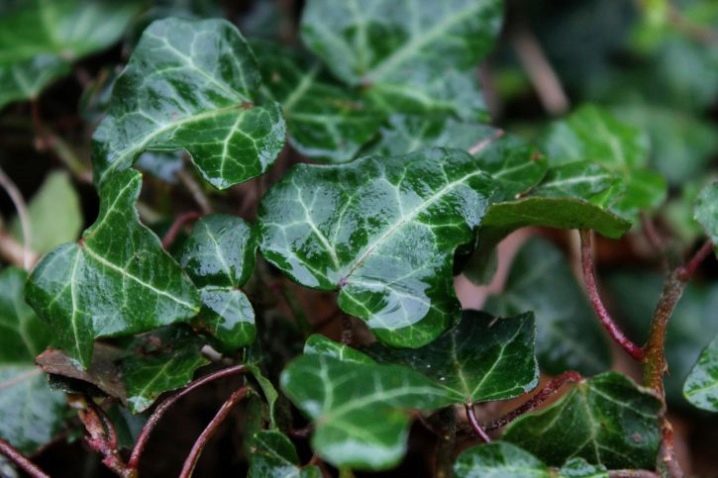
Mulching and loosening the soil
Periodic loosening of the soil under the heders and mulching with organic materials (fallen leaves, sawdust, peat chips) ensure optimal air exchange and moisture retention for successful rooting of young plants. The past heavy rains can "overwhelm" the soil, so you need to carefully loosen the soil, avoiding damage to the roots, in order to provide the root system with full breathing and moisture saturation. Scatter a thin layer of mulch under the vines, and gradually increase its thickness as autumn approaches.

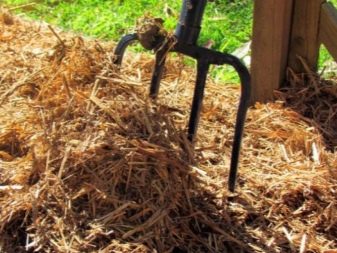
Top dressing
So that the street liana does not lose its decorative properties and decorates the landscape of the site, you need to periodically help it restore strength to form new shoots. For this, complex nitrogen-containing fertilizers are used at the beginning of summer. Since July, they switch to fertilizing with potash and phosphorus fertilizers, which will help the plants to harden before wintering.

Pruning
To make farm buildings or hedges braided with lianas look aesthetically pleasing, it is required to periodically trim and pinch the growing shoots. After pruning, ivy will have many side shoots, which will give the vine a more effective decorative effect. You can start pruning only after the end of the spring sap flow, which will come around the beginning of June.
Processing the cuts with garden pitch or activated carbon will save the vine from possible damage by plant infections.
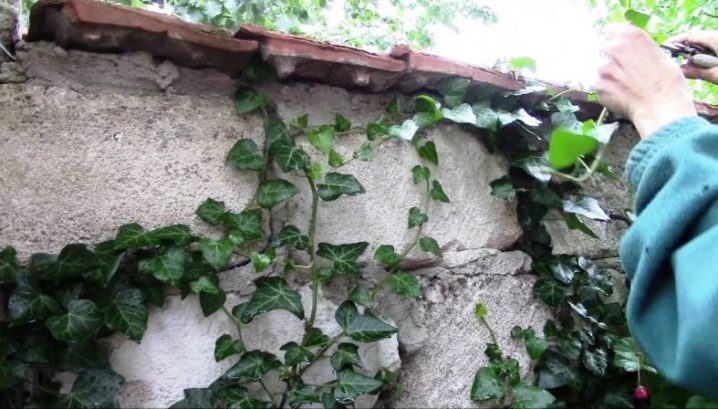
Preparing for winter
The high frost resistance of garden ivy allows them to do without winter shelters in areas with a mild climate. A layer of mulch and snow cover provide sufficient frost protection. In areas with colder winters, vines need to be covered for the winter.It is best to carefully remove them from the support, spread them on the ground and cover them with burlap, a special covering material, and coniferous spruce branches.
In the spring, when the snow melts, the shelter must be removed in a timely manner so that the shoots do not suffer from damping off.
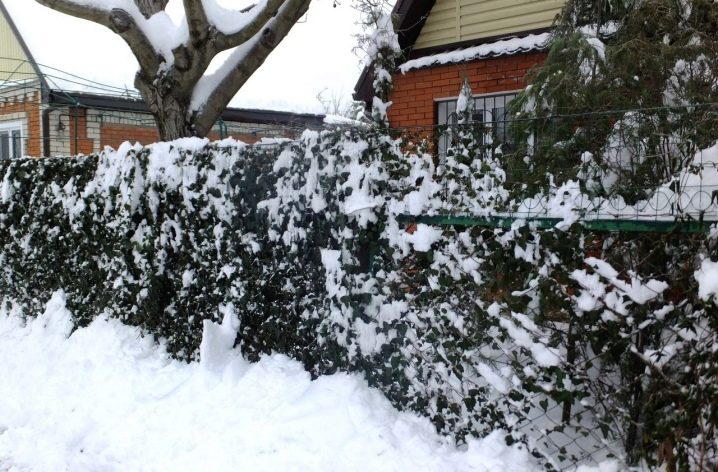
Application in landscape design
Gardeners actively use heders in landscape compositions on their plots. Curly lianas, intricately entwining various buildings and hiding unattractive areas in the country, are a fabulous sight. Ivy can transform an empty wall, gazebo, arch, pillar, column. And this will not require any special worries from the owners of the site. Ivy get along well next to various types of shrubs - be it conifers, deciduous or planting roses. Subject to cultivation techniques and proper care, fresh climbing vines will decorate your site for many years.
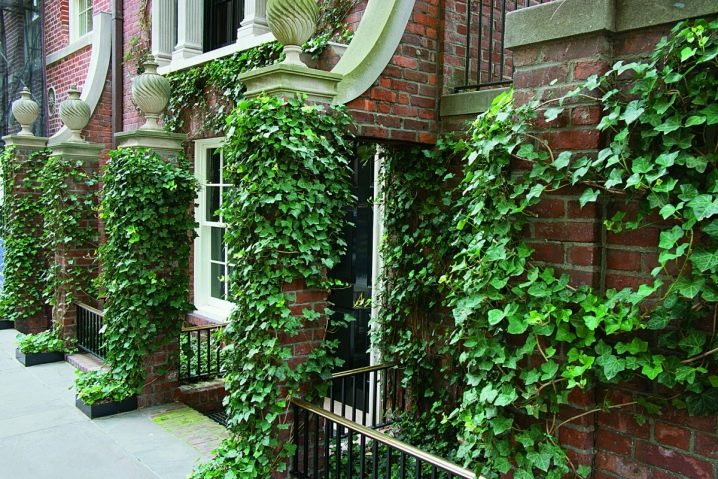
For how ivy grows, see the next video.
































































































The comment was sent successfully.